Herbal healer in the garden - blackberry: planting and care
Black, tasty and healthy berry, blackberry, is increasingly grown in vegetable gardens and orchards in both the southern and northern regions. Even the changeable climate and unpleasant thorns of the plant no longer stop the gardener from the idea of growing a delicious berry.
The breeders have done a great job and bred varieties and hybrids that winter well and do not have thorns. Everyone knows about the benefits of blackberries, but few people know about the growing conditions and the peculiarities of caring for the shrub. Planting, care, breeding methods and much more, the gardener learns from the material about the herbal healer - the blackberry.
Content:
- Description of the plant
- Types and popular varieties of blackberries
- Growing conditions
- Planting rules for seedlings
- Blackberry breeding methods
- Bush care
- Diseases and pests
- A little about the beneficial properties of blackberries
Description of the plant
Blackberry - a shrub with flexible stems and shoots covered with sharp thorns. The leaves are trifoliate, green. The fruits ripen for a long time and change color during the growing season - from green to brown and finally black. Belongs to the Pink family.
In the middle lane, it is customary to grow two types of crops - kumaniku or bushy and bluish blackberries, another name is azhina.
There are countless types and varieties of berries, but not all are frost-resistant. In the United States, blackberries began to be grown and harvested on an industrial scale long before their appearance in Europe. Breeders bred hybrids with yellow, white, black and orange berries.
In the wild, the plant is found in North America and Asia - the birthplace of culture. Distributed in the Caucasus, Ukraine, China, Mexico. In forests it forms impenetrable thickets, its shoots and branches reach 4-5 m. Blackberry fruits are used in cooking, leaves, stems and roots - in medicine. In the middle lane, only two types of blackberries are grown. Breeders have bred a huge number of varieties and hybrids of these species.
Types and popular varieties of blackberries
Kumanik or bushy species is winter-hardy and is grown in regions where the winter air temperature does not drop below -30 °. Blueberry or dewberry, azhina is less winter-hardy, but is capable of hibernating under cover at temperatures not lower than -20 °. The semi-creeping species is a semi-shrub with long branches. Often shoots and stems of blackberries are not erect, but creeping. For cultivation, you have to build trellises.
Among the popular varieties are:
- Bushy species - "Apache" and "Arapakho" (without thorns), "Theodore", "Eldorado", "Agavam", "Lawton" (with thorns). The bushes are erect.
- A kind of gray or dewdrop - "Abundant", "Lucretia", "Thornless Evergreen", "Boysen" (with thorns), "Thornless Evergreen", "Thornless Logan" (without thorns).
- Semi-creeping view - Buckingham Tayberry, Thornfree, Black Satin (no thorns).
Also distinguish varieties%
- "Flint" - has thorns, creeping shoots, large fruits, winter-hardy.
- "Natchez" is distinguished by very large fruits, without thorns, erect bush, shelters for the winter.
- "Marion berry" - American variety, very large fruits, with thorns, requires shelter.
- "Tayberry" has large fruits, ripens early, creeping culture, requires garter and shelter for the winter.
When choosing a cultivar or hybrid, consider the region and size of the shrub as it grows. You should also pay attention to the timing of the ripening of berries - early, medium or late ripening varieties. The former are typical for regions with short summers, the latter for the southern regions.
Growing conditions
A rather large area is selected for culture. The plant grows strongly, especially the creeping species. Blackberry develops well and bears fruit in sunny heights, where there is no threat of soil flooding. The best option is a bright place on a small hillock, the north side of which is protected by a building or fence. There should be no trees or other shrubs in this place.
The culture is unpretentious to the soil, but prefers a loose, fertile substrate with a neutral pH.
Before planting, make organic, wood ash. If the soil is heavy, dilute it with sand and peat. The main conditions for the soil mixture are moisture and air permeability. Choosing a bright place where the soil is always moist, but not damp, blackberries will delight the gardener with large berries.
Planting rules for seedlings
Usually blackberries are planted in large quantities, several seedlings per plot. If this is a group landing, it is more expedient to land in a trench.
Landing features:
- In the spring, a ditch 60x60 cm in size is dug.
- It is filled with humus, wood ash and, if necessary, with sand in a ratio of 1: 0.5: 0.5. Everything is mixed with the soil.
- Root system the seedling is straightened and gently immersed in the substrate, gradually covering it with earth.
If planting involves one plant, a 40x50 cm hole is dug out and filled with the same substrate. The distance between erect semi-shrubs is from 1 m to 1.5 m. Between creeping crops - from 1.5 to 3 m. The greater the distance between the bushes, the better.
The plant grows very much, keep this in mind when planting.
Before planting, be sure to moisten the soil both in the hole or trench and in the container with the seedling. So there will be less chances to damage the root system when transplanting, straightening the roots. Observing simple planting rules, the seedling will quickly take root and adapt to new conditions.
Blackberry breeding methods
There are many methods of breeding blackberries - cuttings, dividing the bush, seeds, apical layers, root suckers. Let's consider only the most effective and popular methods:
- Blackberries are more often propagated by root or green cuttings. The first ones are cut from the root system of the uterine bush up to 7 cm long.This should be done either in spring or in autumn. After cutting the root cuttings, immerse them in a sand and peat substrate. Moisturize it constantly. Green cuttings are taken from blackberry shoots with one leaf, bud and stem up to 15 cm long. Stalk immersed in the same substrate under the cover - a film. Rooted cuttings are planted as soon as their root system gets stronger.
- TO dividing the bush resort in case the blackberry variety does not give offspring. In the spring, a bush is dug up and divided into several parts so as to separate young shoots with well-developed roots from the old ones. Delenki are immediately planted in their permanent places.
- Often creeping blackberry varieties are propagated by apical layers. For this, young shoots are chosen, the ends of which have not yet become woody. Small grooves are dug in the ground and shoots are bent in them, fixed, watered. When the cuttings take root, they are separated from the mother plant and transplanted to a permanent place.
- Seeds. Gardeners resort to this method if they want to propagate their favorite variety while preserving the maternal properties. The seed undergoes scarification procedures (if possible) and stratification without fail.The seeds are mixed with sand and peat, moistened and placed in a room with a temperature not exceeding 2 ° -5 °. The stratification procedure lasts 2-2.5 months with constant light moisture of the substrate. After that, the seed is soaked in melt or rainwater for two to three days. Dry a little under natural conditions and sow in a prepared substrate. When 4-5 full-fledged leaves appear, the seedlings are planted in a greenhouse or open ground, depending on the region.
Blackberries grown from seeds will not begin to bear fruit immediately, but after 3-4 years. In this regard, gardeners prefer a vegetative reproduction method - cuttings, dividing the bush or layering.
Bush care
Blackberry care is pretty simple. It is unpretentious, but certain agronomic techniques cannot be dispensed with - doing spring pruning, watering in summer, feeding young seedlings and covering for the winter if necessary.
Water the plant sparingly, since blackberries do not tolerate dampness, excessive watering.
This will lead to decay of the root system. She also does not like heat, dry soil. The soil must be moistened. To retain moisture mulch the area around the stem with a layer of up to 5-8 cm. During the summer, carefully cover the mulch in the soil and add fresh. This way the blackberries will always receive moisture and nutrients at the same time. If the soil was not prepared for planting blackberries with the introduction of humus, ash, in the spring the plant is fed with nitrogen complexes, in the summer - with phosphorus-potassium complexes. If the soil during planting was enriched with organic matter and potassium salt, then fertilization is not required in the first two years. After the culture begins to feed.
Every spring, a "revision" of the bush is carried out and old shoots are cut off. Frozen shoots are also removed. Only young shoots should remain on the bush.
In the first year of life, the plants undergo "general" molding:
- As soon as the main stems reach 1 m in length, they are pinched 10 cm.
- Further, lateral shoots begin to form, which, when they reach a length of half a meter, are also pinched. The root shoots are removed.
- It is important to leave no more than 12 buds on the shoots. So, every year the gardener needs to cut off old shoots and replace them with new ones.
Equally important is the construction of a trellis to support tall shoots of creeping blackberry species. Usually two pillars are installed and a wire is pulled between them. The first constriction is located at a height of 80 cm from the ground. Further, the intervals between the beams are located at a distance of about 30-40 cm. The height of the trellis is 2 m, not less. The molding and pruning procedure is needed so that the blackberry gives more yield, does not stretch up to 5 m in length, but bush.
Almost all blackberry varieties require shelter for the winter. For this:
- Shoots are removed from the trellis, if it is a creeping species, and covered with a thick layer of mulch from cut grass, humus or spruce branches.
- A film or special insulation is laid on top. You can also add a layer of straw. Do not forget to put poison from mice in a shelter, otherwise they will choose a "warm house" for wintering.
- In the spring, the shelter is removed gradually so that there is no large temperature difference.
If you do not cover the plant for the winter, nothing will happen to the root system, but the buds will freeze out. They do not tolerate low temperatures. Following the rules of care, the culture will delight you with delicious fruits that will ripen until the cold weather.
Diseases and pests
Blackberry diseases are not much different from ailments raspberries... These related crops affect similar pests and fungal diseases. Fighting the fungus is quite difficult, the main thing is to determine it in time. Remove the affected parts of the bush and treat with herbal solutions or chemicals.
Of the common ailments of blackberries, there are:
- Rust (the entire ground part of the plant is affected).
- Anthracnose (purple spots on the shoots).
- Didimella (brown or purple spots on the shoots).
- Septoria (white spots).
- Gray rot (affects berries during storage and young shoots).
- Powdery mildew (white bloom on all ground parts, including fruits).
As a rule, when fungal diseases appear, some pests are also found. They usually appear in dry or rainy weather. Allocate:
- Raspberry and blackberry aphids
- Spider mite
- Raspberry mite
- Raspberry kidney moth
- Raspberry weevil
- Medvedka
- May beetle
- Raspberry fly
It is much easier to deal with pests, but only if they appeared before the formation of fruits. The bushes are treated with insecticides, if the fruits have already appeared - with plant solutions.
For prevention, between the rows of blackberries are planted onion, garlic and marigold.
These plants repel many blackberry pests. To prevent spotting and deformation of greenery, shoots due to a lack of minerals, apply to the soil mineral fertilizers, organics.
If the year is very dry or, on the contrary, rainy, examine the bushes especially carefully. Most likely, the appearance of diseases and pests cannot be avoided. Proper care and planting is the best prevention of diseases and pests.
A little about the beneficial properties of blackberries
The blackberry fruit contains a large amount of vitamins that are necessary for the human body to function properly. Allocate vitamins of group B, also E, A, C, K, R. B blackberry a lot of iron and potassium. For the treatment of diseases, all parts of the plant are used - berries, leaves, shoots and even roots.
The list of ailments that can be cured with fresh fruits and decoctions include:
- Diseases of the gastrointestinal tract.
- Atherosclerosis.
- Cholecystitis.
- Recovery after surgery.
- Insomnia.
- Nervous agitation.
- Climax.
- Depression.
- Heart failure.
- Colds.
- Anemia.
- Inflammation of the mouth, throat.
The fruits contain a large amount of vitamin E - an antioxidant. Daily consumption of berries helps to slow down the aging process of the epidermis thanks to this vitamin. Blackberries have a tonic, hemostatic and anti-inflammatory effect.
To maintain good health, doctors recommend eating 100 grams of berries daily.
Growing a healthy and tasty berry on the site is not so difficult. Observing the rules landing and leaving, the gardener will receive a bountiful harvest. Blackberry fruits have unique properties and give a person a storehouse of vitamins, which are not found in such quantities in any other berry. Blackberries in the garden are a guarantee of the health of the whole family!
More information can be found in the video:






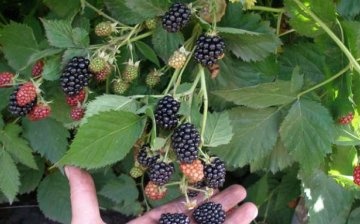
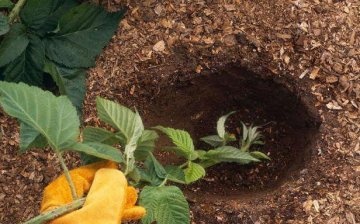
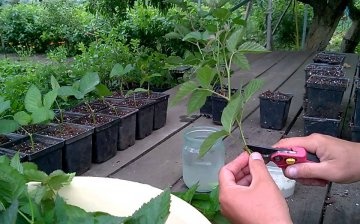
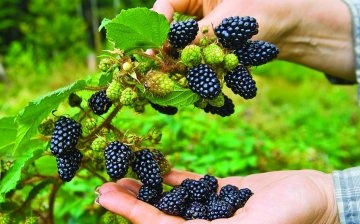
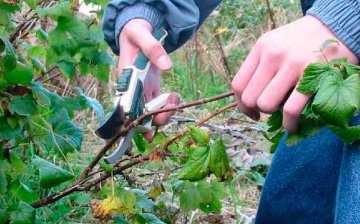
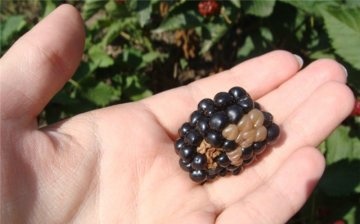
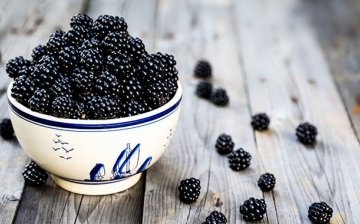












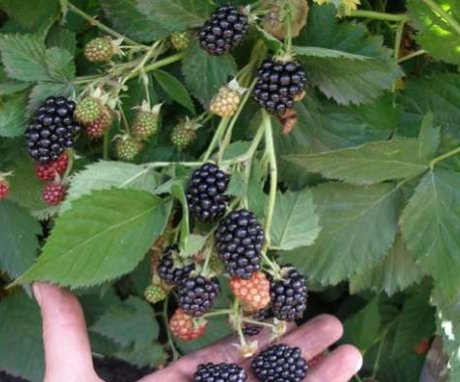
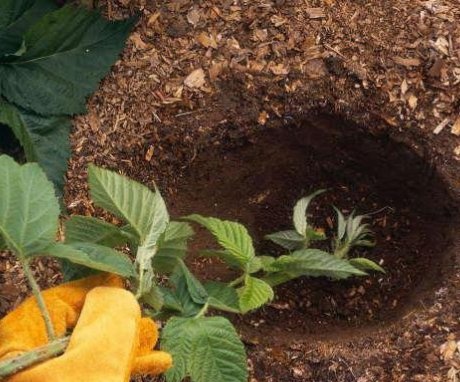




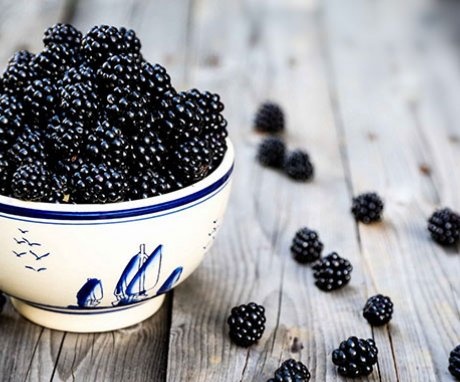
Thanks for the article, last year a colleague gave me a couple of bushes for divorce, I will try. True, only this year I have already thrown out the flowering, maybe I'll try the fruits, but I learned a lot in the article.